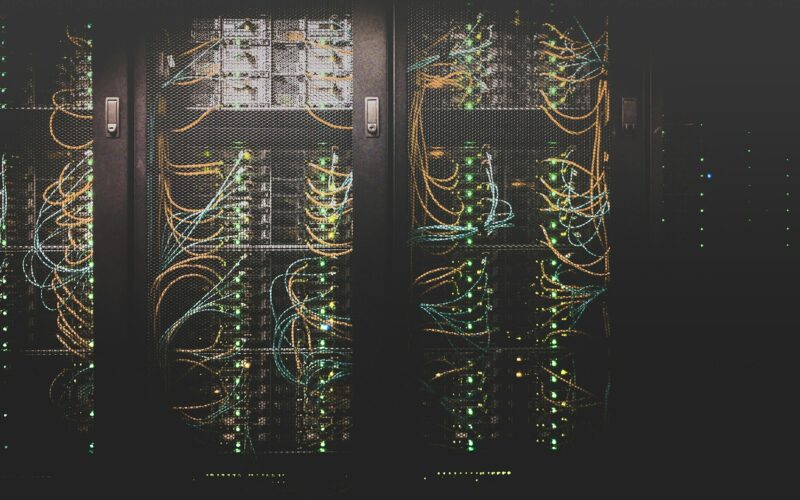Energy efficiency in data centers is crucial due to their significant consumption and environmental impact. There’s rising demand for storage and processing, and data centers are seeing higher operational costs and increased carbon footprints. Improving energy efficiency reduces expenses and supports sustainability goals. AI and machine learning have emerged as powerful tools in this regard.
These technologies analyze vast amounts of information in real time, identify patterns and make predictive adjustments to optimize power use. Leveraging AI and ML lets data centers achieve smarter cooling, predictive maintenance and more efficient workload management. These upgrades lead to substantial energy savings and a greener operation.
1. Predictive Maintenance
Predictive maintenance leverages AI and ML to anticipate equipment failures before they happen, ensuring timely intervention. AI can detect anomalies and predict when equipment will likely fail by continuously monitoring data from various sensors and systems. This proactive approach reduces unexpected breakdowns by up to 70% and lowers maintenance costs by approximately 25%, as organizations can schedule upkeep only when needed.
For instance, data centers can use AI to predict cooling system issues and allow adjustments to prevent downtime and maintain optimal efficiency. Similarly, it can implement predictive maintenance to enhance equipment reliability and reduce operational costs.
2. Dynamic Cooling Management
Cooling systems in data centers are vital for maintaining optimal operating temperatures, preventing overheating, and ensuring the reliability of servers and other equipment. However, they are notoriously energy-intensive, typically consuming around 40% of a facility’s total power usage.
AI-driven dynamic cooling offers a solution that continuously analyzes temperature data and adjusts cooling levels in real time. This intelligent approach optimizes cooling efficiency and delivers the precise amount required at any moment rather than relying on static settings.
As a result, data centers can achieve significant power savings and extend the life span of their equipment by avoiding the wear and tear associated with excessive cooling. For example, companies can use AI-driven systems to enhance energy efficiency and demonstrate the substantial benefits of this technology.
3. Energy Consumption Forecasting
Energy consumption forecasting using AI is critical in optimizing data centers‘ power usage, which globally consume around 400 terawatt-hours of electricity annually – nearly 2% of the total power generated in 2020. AI provides highly accurate predictions of future energy needs by analyzing historical data and identifying consumption patterns.
These forecasts enable data center managers to plan more efficiently, allocate power resources effectively and reduce energy waste. For example, organizations can use AI-driven forecasting to balance their power loads and prevent overprovisioning and underutilizing resources. Similarly, they can employ AI to predict usage, optimizing their infrastructure to achieve significant savings and enhanced operational efficiency.
4. Smart Energy Storage Management
Energy storage solutions in data centers are essential for maintaining continuous operations and mitigating the financial risks associated with power outages. These disruptions can cost at least $100,000 per incident, with some exceeding $1 million. Solutions typically include batteries and other backup power systems providing a reliable supply during blackouts.
AI and ML optimize energy use and storage by analyzing consumption patterns and predicting peak usage times. These technologies help ensure power is utilized most efficiently. This intelligent management reduces reliance on the grid during high-demand periods, leading to significant cost savings and improved efficiency. For example, data centers using AI to manage energy storage can seamlessly transition to backup power when needed, minimizing downtime and reducing operational costs.
5. Renewable Energy Integration
Integrating renewable power sources in data centers is a vital step toward sustainability. Google’s partnership with a startup to run its data centers on 24/7 carbon-free energy by 2030 exemplifies this approach. AI and machine learning are crucial in managing the variability and efficiency of green power.
Predicting energy production from sources like solar and wind lets AI optimize renewable power, ensuring a consistent and reliable supply. These technologies also help balance, store and distribute it during periods of low generation. This smart management enhances the efficiency of renewable energy and supports data centers in achieving their carbon reduction goals.
Embracing AI and ML for a Sustainable Future
Adopting AI and ML for sustainability in data centers is paramount because these technologies drive significant energy savings and operational efficiency. Data center managers must explore and implement AI and ML solutions to enhance their sustainability efforts and future-proof their operations.
The post How to Optimize Data Center Energy Efficiency With AI appeared first on Datafloq.
Source link
lol

